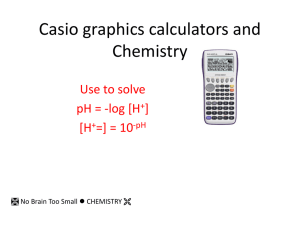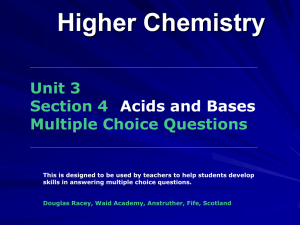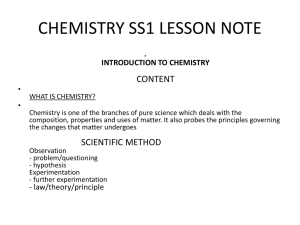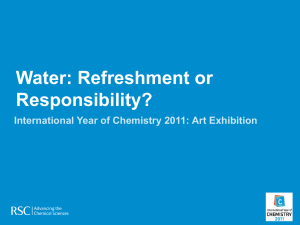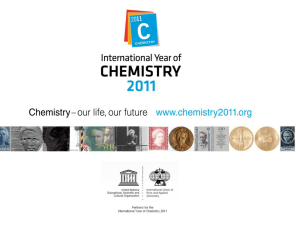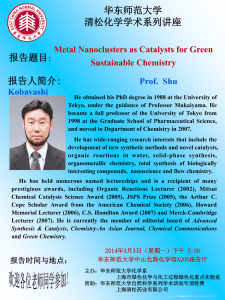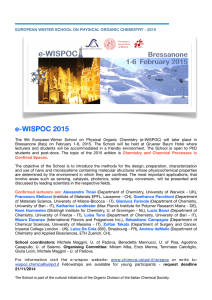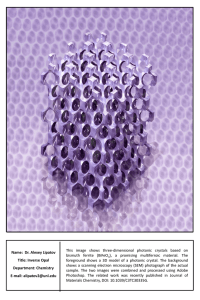Reaction Rates
advertisement
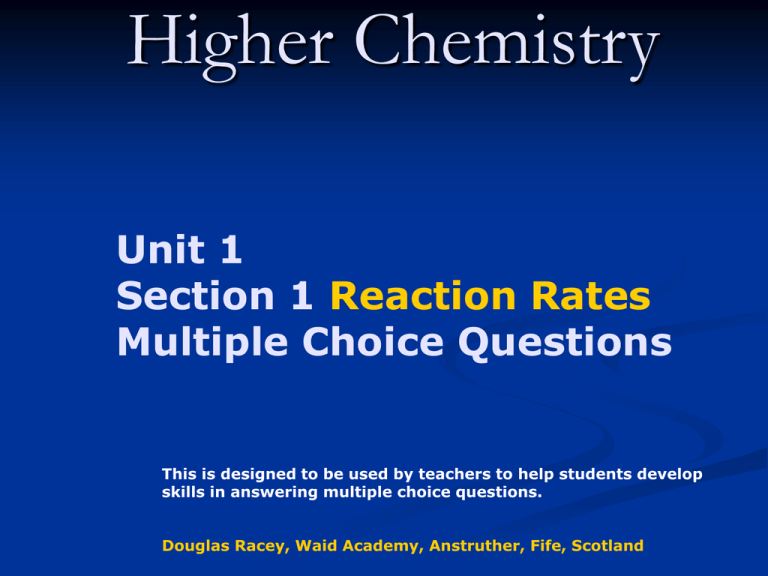
Higher Chemistry Unit 1 Section 1 Reaction Rates Multiple Choice Questions This is designed to be used by teachers to help students develop skills in answering multiple choice questions. Douglas Racey, Waid Academy, Anstruther, Fife, Scotland Higher Chemistry 1. Unit 1 - Section 1 Reaction Rates Multiple Choice Questions Excess marble chips (calcium carbonate) were added to 25cm3 of hydrochloric acid, concentration 2 mol l-1. Which measurement, taken at regular intervals and plotted against time, would give the graph shown? A. B. C. D. temperature volume of gas produced pH of solution mass of the beaker and contents Answer D. Higher Chemistry 2. Unit 1 - Section 1 Reaction Rates Multiple Choice Questions The same reaction was carried out at four different temperatures and the times taken for the reaction recorded. Temperature /oC 20 30 40 50 Time / s 60 30 14 5 The results show that A. a small rise in temperature results in a large increase in reaction rate B. the activation energy increases with increasing temperature C. the rate of the reaction is directly proportional to the temperature D. the reaction is endothermic Answer A. Higher Chemistry Unit 1 - Section 1 Reaction Rates Multiple Choice Questions 3. In area X A. molecules always form an activated complex B. no molecules have the energy to form an activated complex C. collisions between molecules are always successful in forming products D. all molecules have the energy to form an activated complex Answer D. Higher Chemistry Unit 1 - Section 1 Reaction Rates Multiple Choice Questions 4. Excess zinc was added to 100cm3 of hydrochloric acid, concentration 1 mol l-1 Graph I refers to this reaction. Graph II could be for A. excess zinc reacting with 100cm3 hydrochloric acid, concentration 2 mol l-1 B. excess zinc reacting with 100cm3 of sulphuric acid, concentration 1 mol l-1 C. excess zinc reacting with 100cm3 of ethanoic acid, concentration 1 mol l-1 D. excess magnesium reacting with 100cm3 of hydrochloric acid, concentration 1 mol l-1 Answer D. Higher Chemistry 5. Unit 1 - Section 1 Reaction Rates Multiple Choice Questions When copper carbonate reacts with excess acid, carbon dioxide is produced. The curves shown were obtained under different conditions. The change P to Q could be brought about by A. increasing the concentration of the acid B. decreasing the mass of copper carbonate C. decreasing the particle size of the copper carbonate D. adding a catalyst Answer B. Higher Chemistry 6. Unit 1 - Section 1 Reaction Rates Multiple Choice Questions The continuous use of large extractor fans greatly reduces the possibility of an explosion in a flour mill because A. a build up in the concentration of oxygen is prevented B. local temperature rises a prevented by the movement of air C. particles of flour suspended in the air are removed D. the slow accumulation of carbon monoxide is prevented Answer C. Higher Chemistry Unit 1 - Section 1 Reaction Rates Multiple Choice Questions 7. A small increase in temperature results in a large increase in reaction rate . The main reason for this is that A. more collisions are taking place B. the enthalpy change is lowered C. the activation energy is lowered D. many more particles have energy greater than the activation energy. Answer D. Higher Chemistry Unit 1 - Section 1 Reaction Rates Multiple Choice Questions 8. The graph shown below shows the variation of concentration of a reactant with time as a reaction proceeds. The average reaction rate, in mol l-1 s-1, during the first 20s is A. 0.0025 B. 0.0036 C. 0.0075 D. 0.0090 Answer C. Higher Chemistry Unit 1 - Section 1 Reaction Rates Multiple Choice Questions 9. Which of the following is not a correct statement about the effect of a catalyst? The catalyst A. lowers the energy which molecules need for successful collision B. C. D. provides an alternative route to the products forms weak bonds with reacting molecules provides energy so that more molecules have successful collisions. Answer D. Higher Chemistry Unit 1 - Section 1 Reaction Rates Multiple Choice Questions 10. For any chemical reaction, the temperature is a measure of A. the average kinetic energy of the molecules which react B. C. D. the average kinetic energy of all the molecules the activation energy the minimum kinetic energy required before reaction occurs Answer B.
